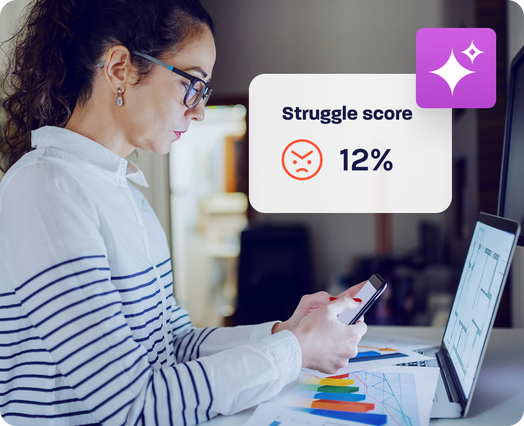A/B testing is a method of comparing two versions of a web page or app to determine which one performs better in terms of user engagement and conversion rates.
The percentage of users who begin a process, such as filling out a form or making a purchase, but do not complete it, often indicating user frustration or inefficiencies in the user experience.
The degree to which a website or app can be used by people with disabilities.
Acquisition cost, also known as Customer Acquisition Cost (CAC), represents the cost of acquiring a new customer.
The process of determining where users come from before they download and install a mobile app, often used to track the effectiveness of marketing campaigns.
The percentage of times a mobile app crashes or fails to load on a user's device.
Instances where a mobile app unexpectedly shuts down or stops functioning properly.
The level of interaction and activity that users have within a mobile app.
The process of attributing app installations or downloads to specific marketing campaigns or channels to measure the effectiveness of user acquisition efforts.
The practice of analyzing and improving the performance, speed, and overall quality of a mobile app to enhance user experience, reduce crashes, and increase user satisfaction.
The percentage of users who continue to use a mobile app over a given time period.
A group of users who started using a mobile app during a specific period and are tracked to understand their retention patterns.
The duration of time that a user spends in a mobile app during a single session.
The process of recording and reviewing a user's interactions within a mobile app.
The amount of time it takes for a mobile app to load and become functional on a user's device.
The percentage of users who download a mobile app after visiting its app store page.
The process of optimizing mobile app metadata, keywords, and visual assets to improve app visibility and drive organic downloads and user engagement.
User-generated ratings and reviews of a mobile app on app store platforms.
The number of times a mobile app is launched and the amount of time users spend within it.
Application Performance Monitoring (APM) is a comprehensive approach to monitoring and managing the performance of software applications. It involves the use of specialized tools and techniques to collect data on various aspects of an application's performance, such as response times, resource utilization, error rates, and user satisfaction.
A set of rules or methodology used to assign credit or value to specific marketing channels or touchpoints that contributed to a conversion or sale.
The average amount spent by customers in a single transaction, calculated by dividing total revenue by the number of transactions.
The average amount of revenue generated by a single user over a given time period.
The average length of time users spend engaged with a website or app during a single session, indicating the level of user interest and engagement.




